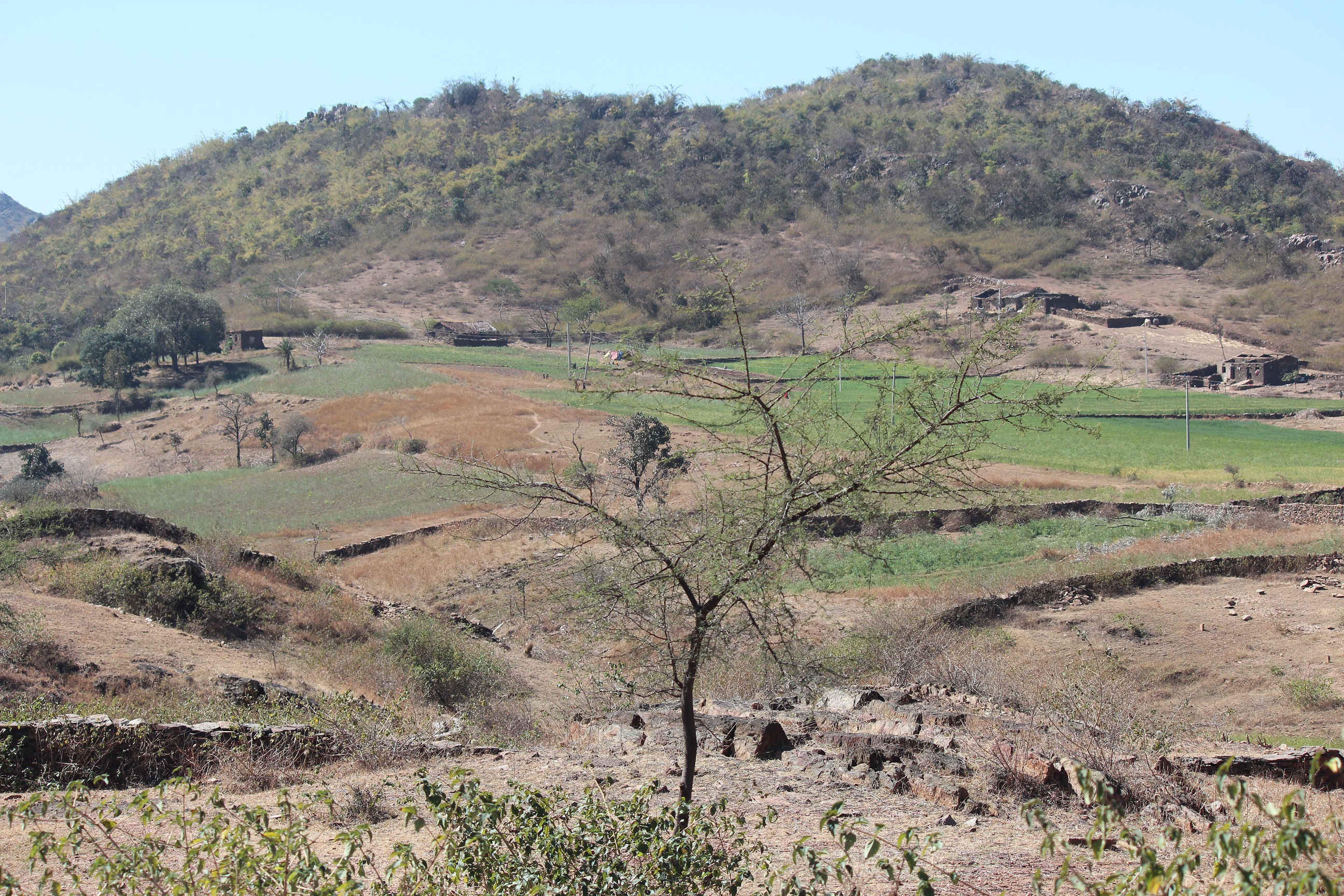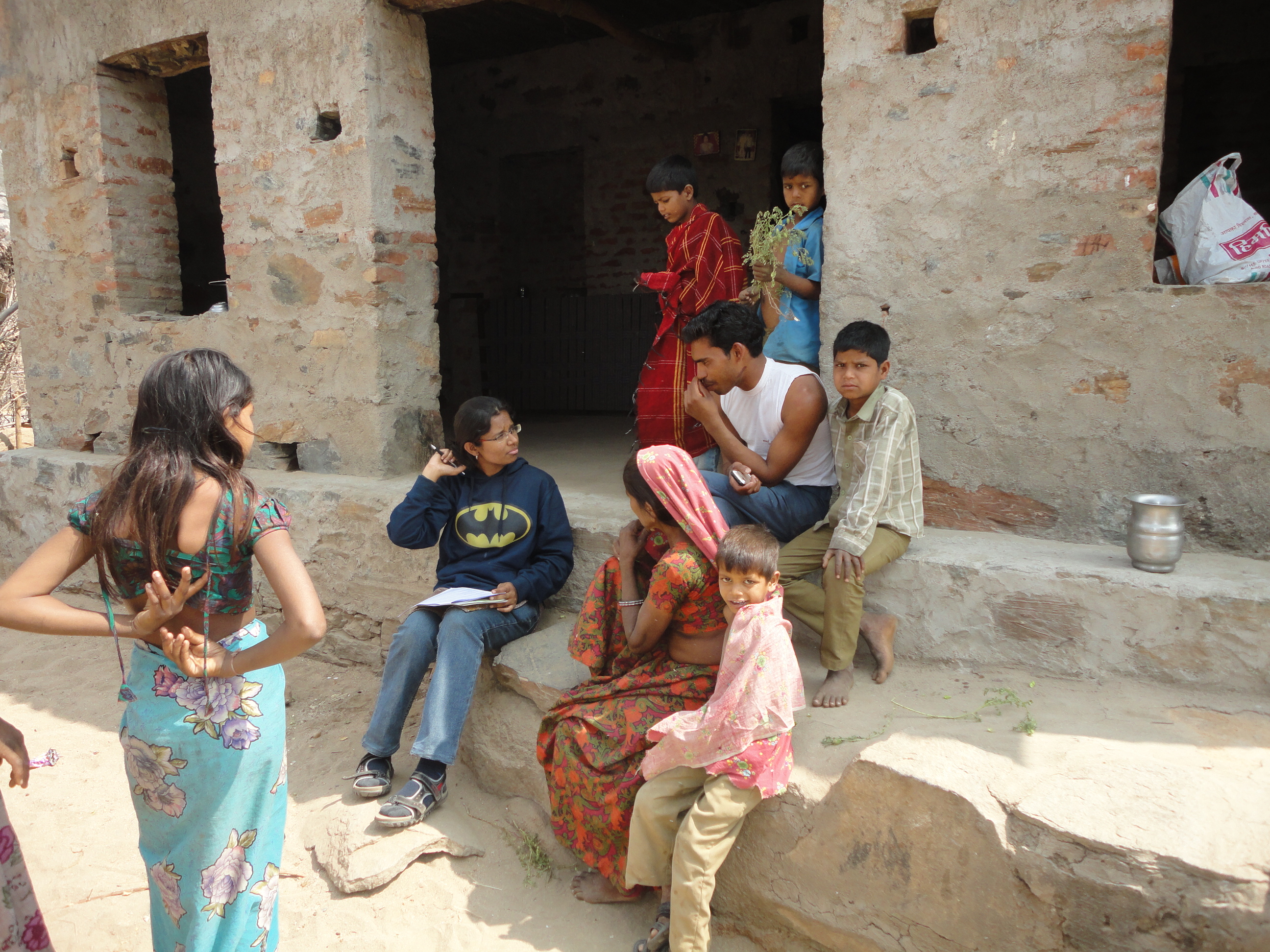- Researchers surveyed 2,233 families living around four wildlife reserves in Rajasthan on their views towards wildlife and the reserves.
- While 76 percent of the families suffered crop damage and 15 percent lost livestock due to reserve wildlife, 85 percent felt protecting reserves was important.
- Households with higher education and men were more supportive towards wildlife protection.
- More families used mitigation measures to defend their crops than for protecting livestock.
Rajasthan’s wildlife reserves are a delight for animal enthusiasts. The dry deciduous forests and scrublands are home to grazing nilgai (an antelope known as the blue bull) and deer, as well as prowling leopards and wolves. But the villagers living on the fringes of these reserves often have to contend with the threat these animals pose to their main sources of livelihood: crops and livestock.
Despite this, these communities show high tolerance for wildlife with 85 percent supporting wildlife reserve protection, finds a new study conducted by researchers from the Wildlife Conservation Society, Duke University, and the Centre for Wildlife Studies in India.
In Rajasthan, as well as in the neighboring states of Gujarat and Madhya Pradesh, communities are known to be highly tolerant of wildlife, says Krithi Karanth, associate conservation scientist at the Wildlife Conservation Society, and lead author of the study.
Clashes—sometimes violent—often erupt between villagers and wildlife because predatory reserve animals kill livestock either when they are grazing inside reserves or when they stray into human settlements. Animals such as nilgai forage or trample crops grown by villagers living along the edges of reserves. Farmers in Bihar have suffered crop losses because nilgai regularly gorge on their produce forcing thousands of farmers to resort to night vigils. The situation even prompted the state government to cull thousands of nilgais in 2016.

Unlike other Indian states, no compensation is provided by the Rajasthan government for crop losses, although they do for the loss of livestock. Without compensation and persistent losses, warns Karanth, villagers may lose their long-held tolerance, become frustrated, and resort to retaliatory killings of reserve wildlife, as seen in the case of tigers and leopards.
This study is valuable because it “has been done in important reserves but those that don’t hog much attention,” said Yash Veer Bhatnagar, senior scientist at the National Conservation Foundation, Mysore.
In 2014, Karanth’s team interviewed Rajasthani communities to understand the negative wildlife interactions they faced over the past year including use of mitigation measures to protect their crops and livestock and their views towards wildlife and the reserves. A total of 2,233 families living within a 10-kilometre radius from four understudied non-tiger reserves—Jaisamand Wildlife Sanctuary, Kumbhalgarh & Todgarh Raoli Wildlife Sanctuary, Phulwari ki Nal Wildlife Sanctuary, and Sitamata Wildlife Sanctuary—in the district of Udaipur in Rajasthan, among others, were surveyed.
According to Ramesh Krishnamurthy, a scientist at the Wildlife Institute of India, Dehradun, the number of families interviewed could have been higher. And ideally, he says, households should have been sampled at different distances from the reserve with more households closer to the reserve. Bhatnagar, on the other hand, says that the sample size is “relatively decent.”

High damage, high tolerance
The team found that 77.5 percent of the families surveyed, experienced negative interactions with wildlife over the past year, particularly during dry spells. Yet 85 percent of the households believed that it is important to protect reserves for wildlife. And 73 percent said that they would value wildlife more without these negative interactions.
Crop damage was common with 76 percent of the families reporting damage over the past year, particularly during July and August, and mostly due to nilgai, jackals, and wild pigs. Loss of livestock, often preyed upon by leopards, jackals, and wolves, was reported in 15 percent of the families surveyed. Similar losses were seen in communities from south and central India, says Karanth.
Households at higher elevations were more likely to lose crops and livestock. Among all the families surveyed, 90 percent of them experienced more than 10 incidents of crop damage per year. Average income loss from crop damage for the past year was Rs 11,000 (around US$ 164), while livestock losses totalled Rs 4,600 (about US$ 70).
Educational and gender differences also emerged in the attitudes towards wildlife. As expected, more educated families showed greater support for protecting animals in wildlife reserves. Men valued wildlife more positively than women because, according to the authors, women are more likely to be exposed to negative wildlife interactions while fetching water or wood. “Women often are the ‘care-givers’ for the livestock,” says Bhatnagar, and as a result, they could “develop a more personal bond” especially with cows and calves.

Moving towards compensation and reducing damage
Most of the families did not seek compensation from the government, probably due to bureaucratic impediments and low awareness, suggests Karanth, but among the 16 families who reported livestock losses, only 6 received compensation, and of those, five got around Rs. 1000 (around US$ 15).
While 71 percent of the households adopted at least one measure to protect their crop, 19 percent embraced at least one step to defend their livestock. Frequently used techniques to guard crops included night-time watching, lighting and scare devices, fencing, and keeping guard animals. Families who had lost crops and livestock over the past years were more likely to employ mitigation strategies. Most were willing to try new mitigation methods.
The study revealed some unexpected findings. Families who had a member with more than 12 years of schooling were less likely to defend their livestock and those living further away from the reserve were more likely to protect their crops and livestock. Both Karanth and Krishnamurthy suggest that more educated households might be less dependent on livestock and have more alternative sources of income.
Karanth’s initial assessments on mitigation in other sites suggest that most of the strategies are ineffective. Future studies will reveal which measures are working. Her past work has shown that compensation matters. Consequently, the authors suggest that policy changes by the Rajasthan government to compensate for crops lost to wildlife will help.

In addition, families can benefit from help in filing for compensation. Wild Seve, a project initiated by Karanth in two high-conflict parks in Karnataka, assists families to complete and submit documentation. Over the past 30 months, around 3000 families have received compensation. She has also noted a positive change in their attitudes; they are less likely to blame the government, resort to violence against forest officials, and kill wildlife.
Bhatnagar stresses greater focus on preventing damage by improving mitigation measures rather than relying solely on compensation. “Compensation can be helpful,” he notes, but according to some studies, it could make families lax towards implementing mitigation measures. He suggests compensation combined with mitigation and increased awareness among the communities affected is the way forward.
To prevent losses, says Krishnamurthy, programs should be community-oriented and based on a rational approach. “Schemes such as crop and livestock insurance policy may have to be implemented jointly,” he adds.
Citation:
- Karanth, K. K., Jain, S., Weinthal, E. (2017). Human-wildlife interactions and attitudes toward wildlife and wildlife reserves in Rajasthan, India. Oryx, 1-9. doi:10.1017/S0030605317001028.